Inside the expensive world of houseplants: The reality of making a living from cuttings + how to create a thriving indoor garden
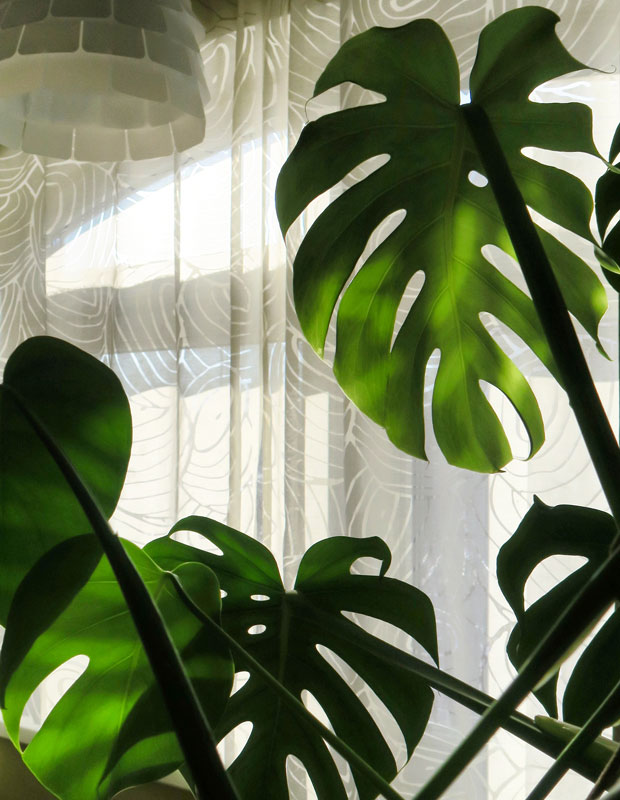
That old houseplant at your grandma’s house might be worth thousands, but can you make a killing growing the most on-trend houseplants?
Words: Jane Wrigglesworth
Houseplants are big business right now. So big that retailers are running out of stock. Even a small specimen of the elegant, trailing Monstera obliqua variety ‘Monkey Mask’ costs about $70. If you can find one.
That’s nothing compared to the $4930 price someone paid for a variegated, 1m-high Monstera deliciosa in January 2020. And that record price was trumped in June when a tiny, rare, reverse-variegated Hoya carnosa Compacta (also known as ‘Hindu rope’) went for $6500 on TradeMe. I was tempted to dig mine up and offer it to the highest bidder.
Thanks to social media influencers, there’s often a waiting list for certain types of plants. If you love the weird and wacky, the variegated, holey, splotched, or striped, you’ll love the current trend for houseplants with unusual foliage.
THE TWO BASIC TYPES OF INDOOR PLANTS
Common flowering houseplants, such as African violets, begonias, and moth orchids, are prized for their colourful blooms. But it’s the other type, with the appeal centred on the leaves, which has surged in popularity in the last couple of years.
A standard Hoya carnosa – once common in every grandmother’s living room – went for a crazy $1000 on TradeMe earlier this year. But even the common monstera (also known as the ‘Swiss cheese plant’) is $70-$135 for a 25cm-high plant.
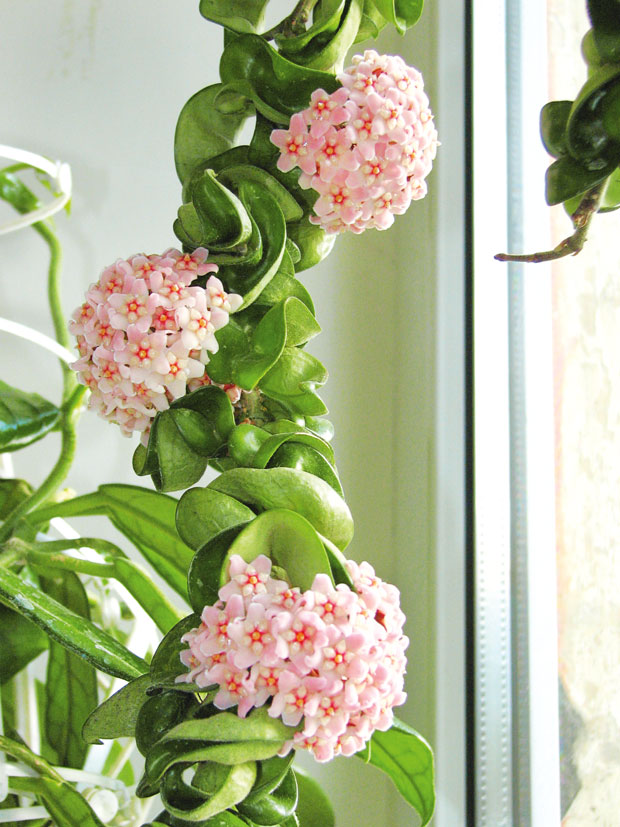
Hoya carnosa.
Rhaphidophora tetrasperma (also known as ‘Mini Monstera’ and Philodendron minima) is very on-trend. You might be able to find a small one (in a 14cm pot) for $40 or so. If you’re after a giant one (in a 34cm pot), you can expect to pay around $120.
Can you make a living from killing, growing and selling houseplants?
THE NOS
If you want to propagate a plant covered by a PVR (Plant Variety Rights), then the answer is no. A PVR gives the person who breeds a new plant variety (also known as a cultivated variety) the exclusive right to:
– sell, or offer for sale propagating material of the protected variety; and,
– produce propagating material of the protected variety to sell.
A PVR typically lasts for 20 years for most plants, up to 23 in the case of ‘woody’ plants, which are more difficult to propagate and take longer to grow. Commercial growers then pay the PVR owner for the exclusive right to produce and sell propagating material of a named cultivar.
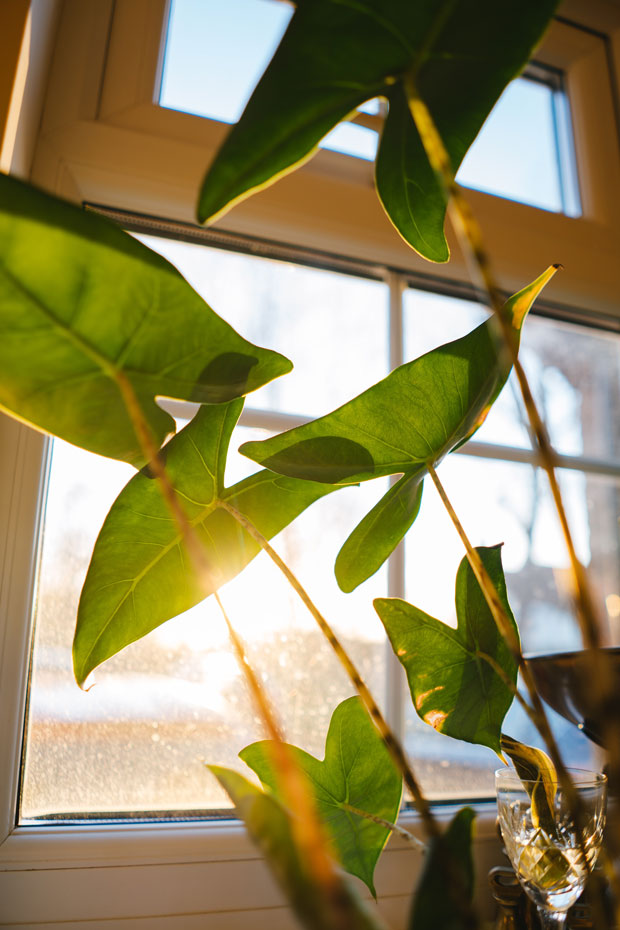
It’s against the law for anyone else to propagate and sell plants protected by a PVR. Check a plant’s label for a PVR before you decide to propagate it for sale.
However, you don’t need permission to propagate and grow a protected variety if it’s for your personal use.
THE MAYBES
Plants that aren’t covered by a PVR can be propagated and sold by anyone, and often it’s pretty easy.
The best way to propagate the more common houseplants, including monstera, Rhaphidophora (philodendron), hoya, succulents, and others, is to take stem cuttings in spring and early summer. Others that form clumps can be divided.
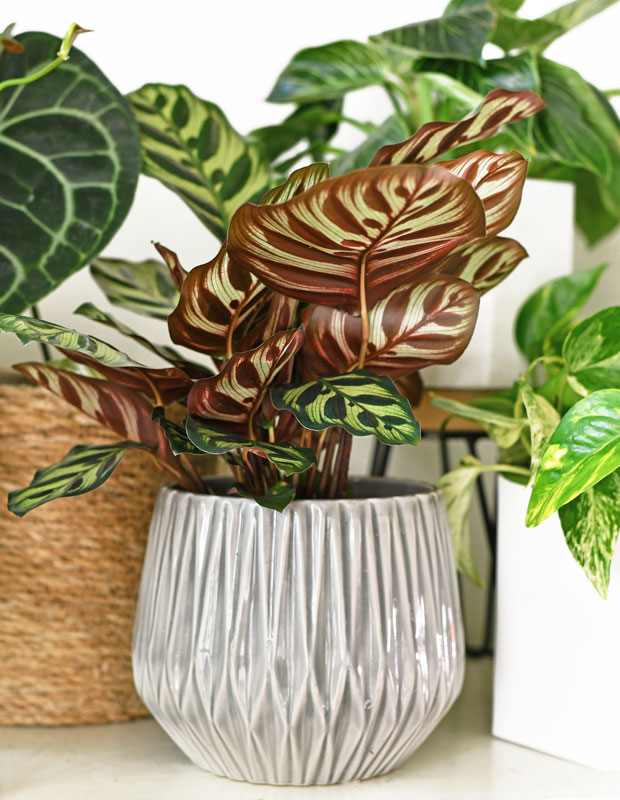
Calathea Makoyana, also known as the Prayer Plant.
But some of the popular ones can be tricky, especially variegated plants. These produce coloured variations of their normally green leaves. Parts of the leaves lack the green pigment chlorophyll, resulting in white or cream stripes (where chlorophyll is completely lacking) or yellow or gold (if it’s partly lacking) patches.
Whether you can successfully propagate one depends on the plant and the cause of variegation. It can be:
– genetic – it’s written into the DNA; or,
– chimeric – it occurs randomly, due to a mutation of cells, and is either stable (genetic) or unstable.
Plants with genetic variegation – the stable types – include calathea and ctenanthe.
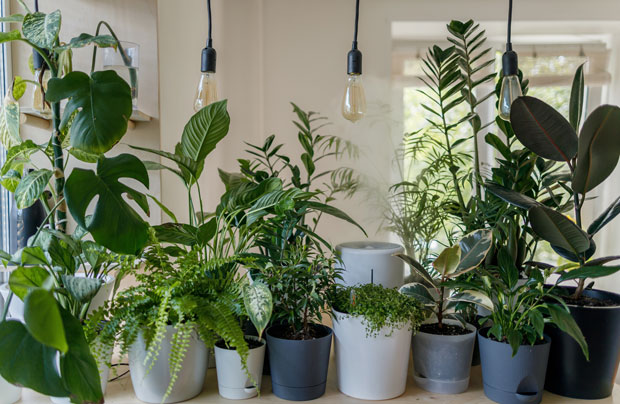
The variegated monstera plant that sold for so much money in January is an unstable, chimeric variegation. These plants can revert to all green leaves at any time, for several reasons, including:
– too little light;
– waterlogged roots;
– changes in temperature;
– a mutation in the leaves.
Variegated plants are less vigorous than non-variegated ones. The leaves that are white, or partially white, are unable to photosynthesise, so they don’t last very long.
They grow slowly, as they can only do half the work of all-green leaves. Only certain plants with chimeric variegation can be propagated successfully (by stem cuttings) to look like their mother’s variegated form.
3 TIPS FOR CREATING AN INDOOR GARDEN
If you want a few beautiful houseplants to green up your home, you won’t have to flog your car, but they do have unique needs.
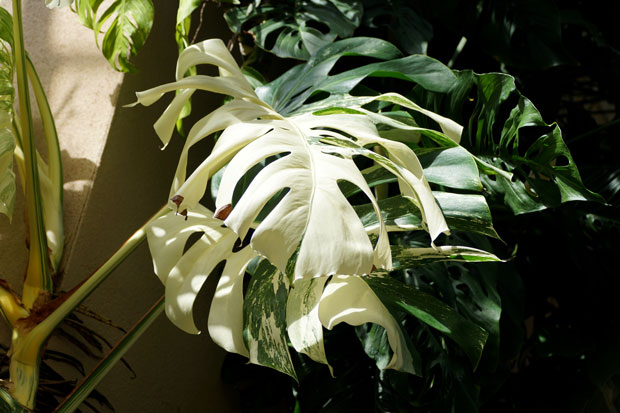
A variegated monstera plant.
1. Look for the light
Most plants need all-day light, and considerably brighter than the inside of most homes, which limits what grows well indoors. The most successful houseplants are those that tolerate shade.
Most houseplants like a light-filled room, but not direct sunlight on their leaves. A position out of the light in a living room that gets lots of sunshine for most of the day is better than a dining room that only gets good light for half the day.
2. Check the temperature
Most houseplants are subtropical but adaptable to NZ’s temperate climate. The living room in the scenario above is likely to be warm, which they prefer.
Some houseplants like humidity (Monstera deliciosa, calathea, golden pothos, watermelon peperomia, etc). Mist with a spray bottle on hot days.
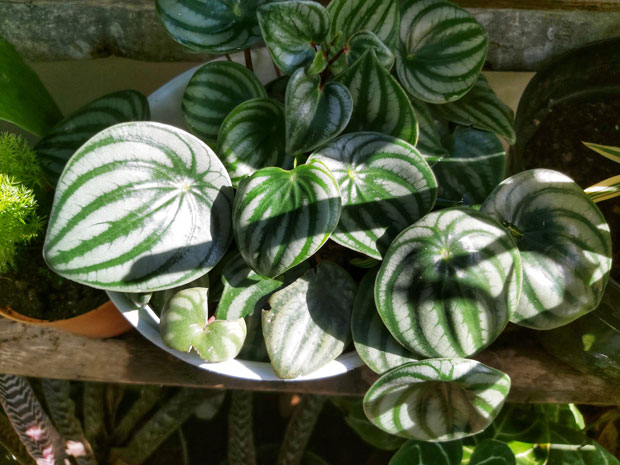
3. Mimic their ideal growing conditions
It’s important to research the needs of the plants you want so you can simulate their natural growing conditions as closely as possible.
With some, it’s easy, such as the popular monsteras. All they need is:
– bright, but indirect sunlight;
– warm conditions;
– good quality potting mix (and repotting every two years);
– a support pole when they get big;
– watering during spring and summer (soil should dry out between waterings).
Other plants have more complex needs, such as the moth orchid.
HOW TO TAKE CARE OF A MOTH ORCHID
The moth orchid is an epiphyte, growing on the bark of trees or in rock crevices. It prefers warm, humid climates in open forests where it gets light, and shade from the tree canopy.
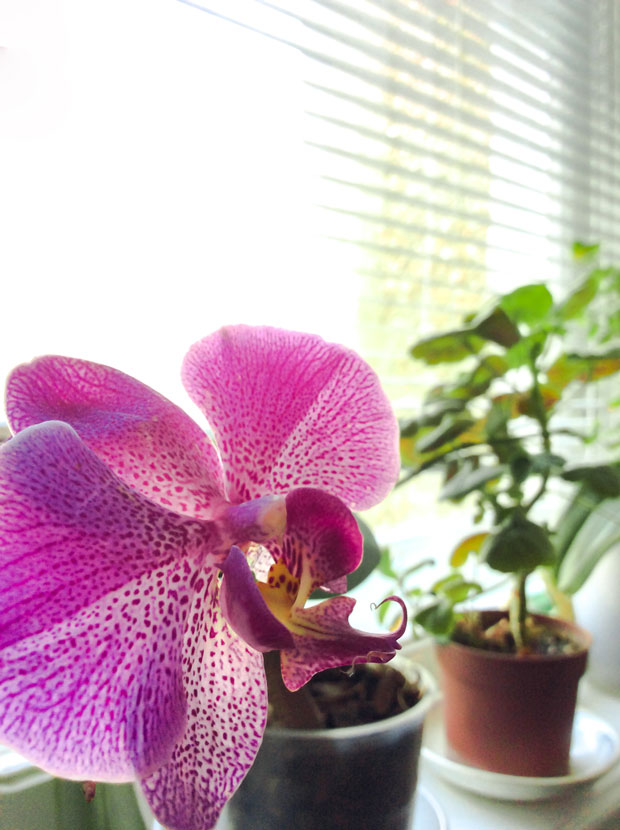
Moth orchids need:
– a consistently warm spot in your home (16°C+), especially when in flower;
– a light-filled room, but don’t put it in direct sunlight;
– a loose, free-draining soil/bark mix;
– plenty of air circulation around the roots;
– occasional misting or a humidity tray under the pot (a saucer of pebbles, half-filled with water).
THE TRICKY WATERING DEMANDS OF INDOOR PLANTS
1. Don’t water much in winter
In a subtropical plant’s natural habitat, the dry season usually coincides with the hot season, and the plants go dormant due to little or no water. In a temperate climate like ours, it’s best to let them go dormant over winter when it’s cooler.
Let your plants rest over this period. Keep watering to a minimum. Only increase watering in spring when growth resumes.
2. Don’t overwater
More houseplants are killed by overwatering than any other cause. If the soil is too wet, the roots can’t breathe and will rot.
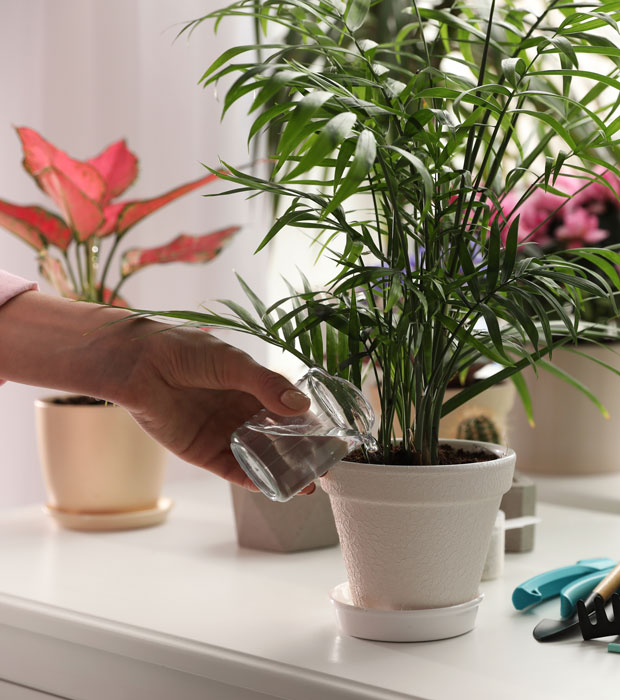
If the leaves of your plant turn yellow and drop, you might be overwatering it. Confusingly, this is also a sign of underwatering.
The type of leaf will give you a clue as to its watering requirements. Plants with thick or succulent leaves, such as sansevieria, can go longer without water than plants with thin leaves.
JANE’S TIPS
– Don’t position plants in front of a heater or heat pump, there’s often a sudden change in temperature.
– Houseplants don’t like big or sudden changes in temperature.
– Plants right up against a window may suffer damage from the change in temperature overnight.
HOW TO SHOW OFF YOUR PLANT COLLECTION
– Hang plants from the ceiling using macrame or rope.
– Place big plants in heavy pots on rolling platforms so they’re easy to move.
– Sit plants on low tables and stools to create varying heights.
– Display on an open shelving unit. The unit can also function as a screen to separate an open plan living space.
MORE HERE
Houseplant happiness: A beginner’s guide to transforming your house into an indoor jungle
Love this story? Subscribe now!
 This article first appeared in NZ Lifestyle Block Magazine.
This article first appeared in NZ Lifestyle Block Magazine.
